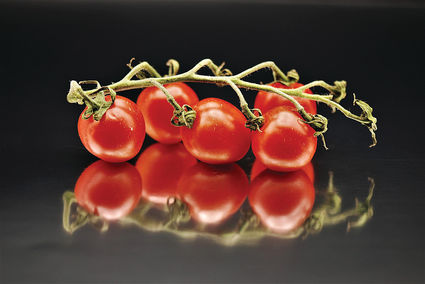Grow-A-Row, Grow a Community: Vegetable Issues
July 2, 2020
Kelly Feehan and Brittany Spieker
Extension Educators
If healthy vegetables are blooming but not setting fruit, such as tomatoes and cucumbers, this is can be due to poor pollination caused by a variety of factors.
This year, heat and high winds could be drying flower parts as well as reducing pollination. Eventually, most plants will begin to set fruit.
With some vegetables, too warm of night and day temperatures delays fruit set. For example, tomatoes will not set fruit when night temperatures are above 75 degrees Fahrenheit or when day temperatures are above 95 degrees. The reason is these conditions reduce pollen production.
Vegetables like cucumbers, squash and melons have separate male and female flowers. The first flowers a plant produces are male. Until the plant begins to produce female flowers, pollination and fruit set will not occur.
To distinguish between the two, look at the base of a flower. Female flowers, known as pistillate flowers because they contain a stigma, style and ovary, will have a miniature fruit at their base.
If female flowers are present, a lack of pollinators could be the problem. For vegetables that are insect pollinated, make sure insecticides are not being applied when plants are blooming.
Tomatoes are mostly wind pollinated and do not need insects for pollination. If lack of fruit is an issue in tomatoes, it is typically due to weather or over fertilization.
Another cause of poor fruit set is applying too much nitrogen fertilizer. Nitrogen can promote the growth of leaves over flower and fruit production.
If gardeners are patient, vegetables will eventually set fruit. A fruit is the part of the plant that carries the seed. Any vegetable part that has seeds is, botanically speaking, the fruit of the plant.
As vegetables begin to set fruit, another issue that may arise is blossom-end rot. This is most common on tomatoes, peppers and summer squash. Blossom-end rot causes the bottom of fruits to develop a dark brown, leathery rot.
The cause is a lack of calcium in the fruit that causes tissue to break down. Rarely is it due to a lack of calcium in the soil or in the plant. Hence, it does not help to apply calcium to the soil or spray it on the plant. In many cases, blossom-end rot affects the first fruits set on and eventually stops.
What happens with early fruits is calcium is being used by leaves, especially if too much nitrogen was applied; or the plant may not be efficiently moving calcium into the fruit. This will occur if soil is dry or conditions are hot and windy.
To reduce blossom-end rot, it is most important to mulch plants to conserve soil moisture and maintain a cooler soil; and to avoid applying too much nitrogen. Some varieties of vegetables are more susceptible. Keep track of varieties and avoid growing those that commonly have this issue.
The Grow-A-Row initiative encourages gardeners to plant an extra row of produce in their gardens and donate that harvest to the Antelope County Food Pantry in an effort to support our neighbors in need. To learn more about the Grow-A-Row initiative, please join the Grow-A-Row Antelope County Facebook Page by either searching for the title or entering the tag @GrowARowAntCo into the Facebook search bar. Interested in donating produce to the Antelope County Food Pantry? Please call Brittany Spieker with the Antelope County Extension Office to schedule a drop-off time by calling (402) 887-5414 or emailing [email protected].



Reader Comments(0)